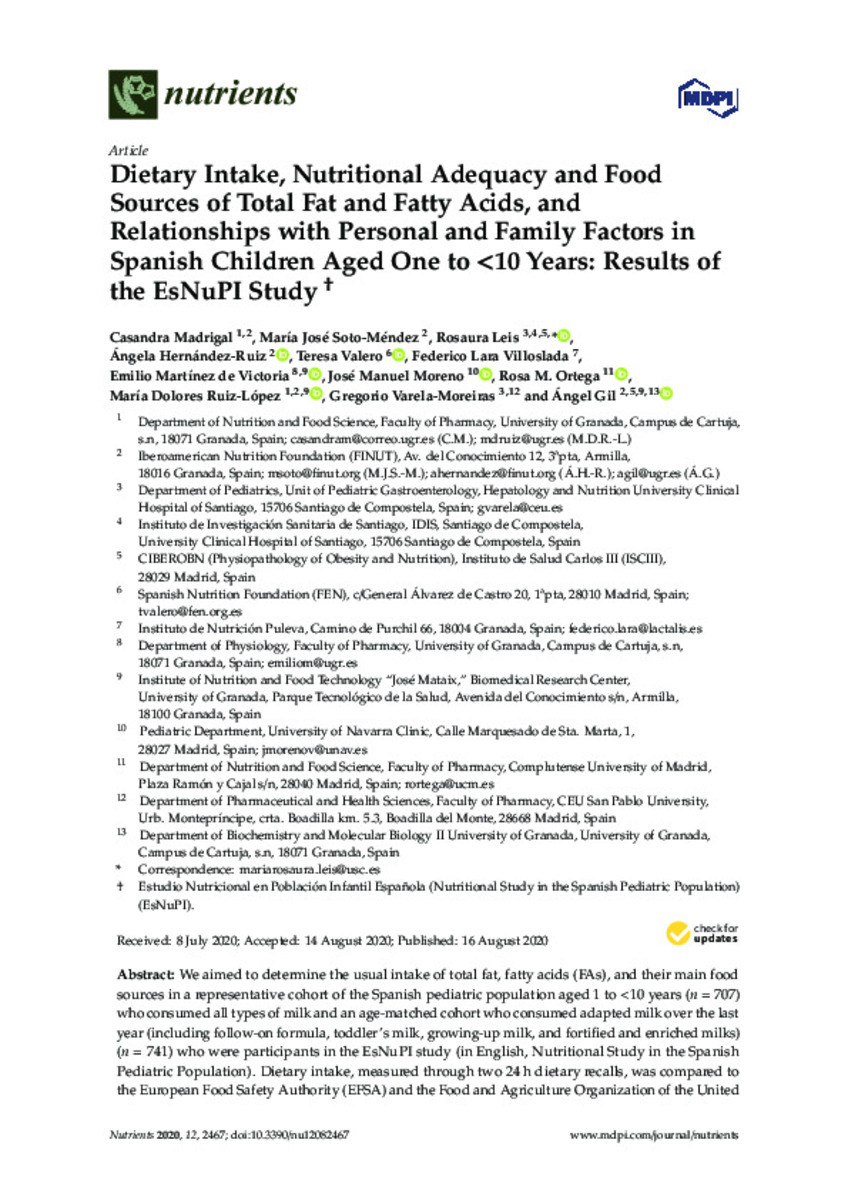Dietary Intake, Nutritional Adequacy and Food Sources of Total Fat and Fatty Acids, and Relationships with Personal and Family Factors in Spanish Children Aged One to <10 Years: Results of the EsNuPI Study
Palabras clave :
EsNuPI study
Dietary fats
Fats
Lipids
Essential fatty acid
Food sources
Pediatric nutrition
Spanish children
Dairy products
Fortified milk
Fecha de publicación :
2020
Nota:
This article is an open access
article distributed under the terms and conditions of the Creative Commons Attribution
(CC BY) license (http://creativecommons.org/licenses/by/4.0/).
Cita:
Madrigal, C. (Casandra); Soto-Méndez, M.J. (María José); Leis, R. (Rosaura); et al. "Dietary Intake, Nutritional Adequacy and Food Sources of Total Fat and Fatty Acids, and Relationships with Personal and Family Factors in Spanish Children Aged One to <10 Years: Results of the EsNuPI Study". Nutrients. 12 (8), 2020,
Aparece en las colecciones:
Estadísticas e impacto
0 citas en

Los ítems de Dadun están protegidos por copyright, con todos los derechos reservados, a menos que se indique lo contrario.







